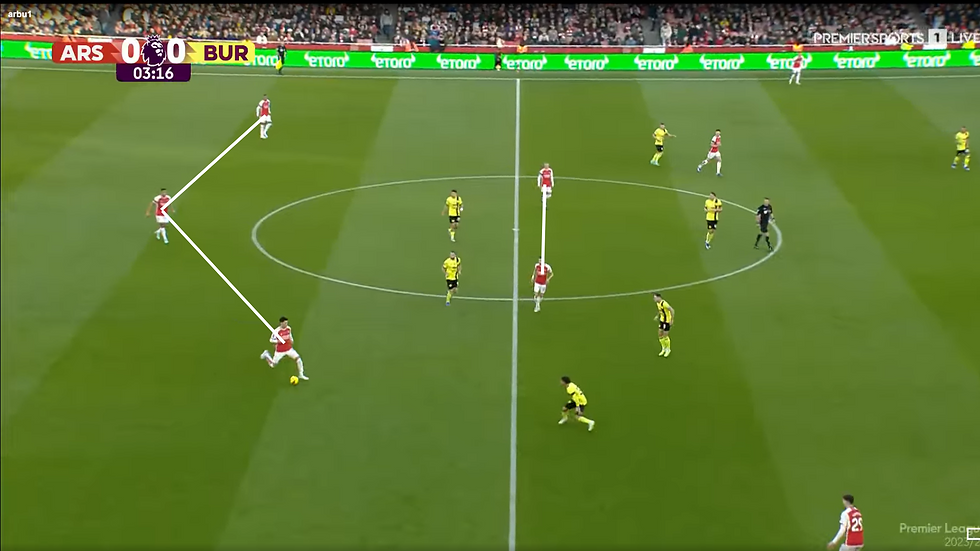Insights, tactics, and rules for successful ball security
Hello and welcome to the latest edition of our newsletter! In this issue, we'll be focusing on the following topics:
⚽ Rest Defense
🏃 Overloads and Asymmetries
👉 Interesting to Watch (Cesc Fàbregas - Build-up Play)
⚽ Rest Defense
Definition: The act of defending or marking the opposing offensive players during possession of one's own team is referred to as rest defense. Players positioned behind the ball at all times to defend against counterattacks constitute the residual defense.
Let's delve into rest defense using an example from Germany, who played a friendly match against Turkey last weekend.

As you can see, the German team positions itself in a 3-2-2-3 or 3-2-5 formation during the possession phase. Now, one might wonder why Germany is positioned so deep with five players? The reason is that they are already anticipating a potential loss of possession while in control of the ball. These deeply positioned players not only create passing options near the ball but also secure their own goal in case of a turnover. They form the defensive shield, also known as residual defense. How many players are needed to establish a solid residual defense? According to Guardiola, his answer is five players. Many coaches also secure their ball possession play with five attackers.


There's considerable debate about numerous aspects of football tactics, including this one. Coaches with a defensive mindset tend to advance with fewer players, having more than five individuals committed to rest defense. On the other hand, offensive-minded coaches aim to minimize their rest defense, focusing on preventing counterattacks from emerging. Many coaches employ the "opponent plus one" rule, securing enough defenders to maintain a numerical advantage during a counterattack. For instance, if the opponent positions three players at the forefront who could pose a quick threat during a counter, the team's defense would consist of four players.

On the other hand, different teams employ a flexible "opponent plus two" rule. This involves having two additional players in rest defense. However, at least one of these surplus players ensures they're ready to advance and support the offensive play if needed.
Regardless of the approach, a team's positional play structure should always distinctly designate which players are responsible for securing their own attacks.
🏃 Overloads and Asymmetries
Players don't always remain on the attacking side where they defend. They often transition from their usual position to the opposite side. The advantages are evident: the team creates a numerical advantage on one side. A modified form of this concept is employing asymmetry. In this scenario, a player on one side of the formation operates differently from the player on the opposite side.
For instance, asymmetry among full-backs involves one advancing far forward while the other remains deeper. This presents opponents with different challenges to contend with.

Many teams are well aware of their "strong side," or which side of the opponent should be intensely targeted. They concentrate their attacking efforts on this side, focusing on aggressive maneuvers, while the other side might be used primarily for shifting the play or creating diversions.

Practical Example: Overload and Asymmetry - Ukraine vs. Italy
👉 Insightful Viewing
After 20 years as a player at the highest level, Cesc Fàbregas took his initial steps into coaching with the Italian club Como. Following his leadership with the youth and reserve teams of this Serie B club, the former star from Arsenal, Barcelona, and Chelsea temporarily assumed the role of head coach in November 2023.
During his playing career, Fàbregas worked under some of the most prominent coaches in the game, including Arsène Wenger, Pep Guardiola, José Mourinho, Vicente del Bosque, and Antonio Conte. It remains intriguing to observe his progression as a coach.
In this video, he details his vision for shaping build-up play to advance his team into the final thirds of the field and create scoring opportunities.
.png)
Comments